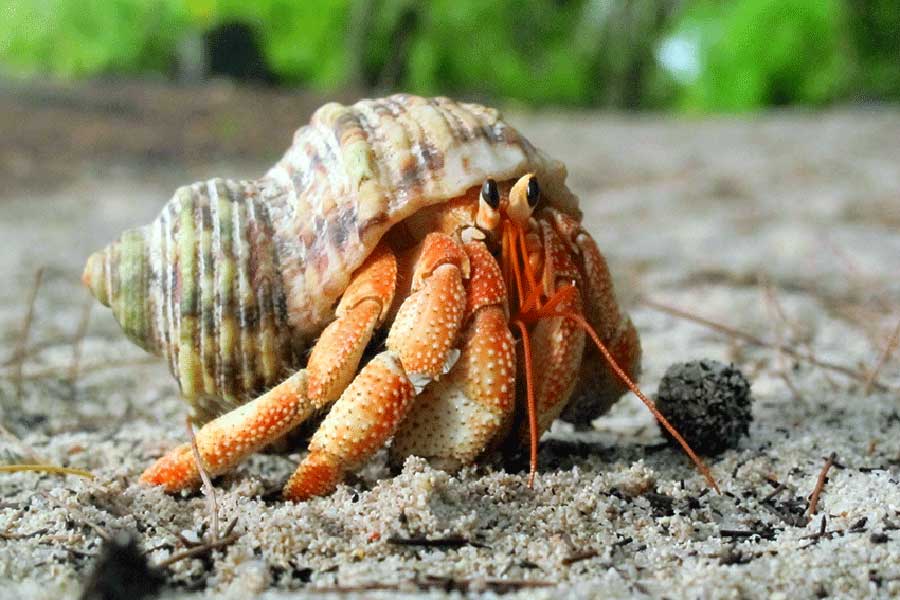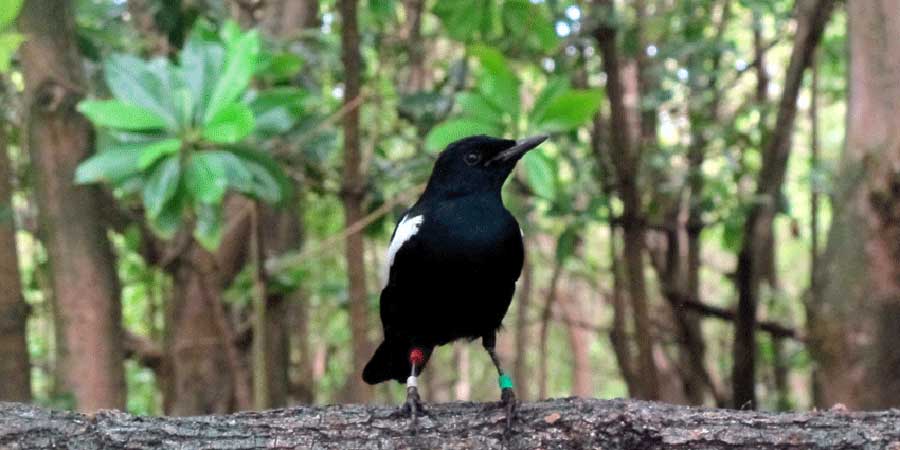
Cousin Island Special Reserve, a tiny island in the middle of the Indian Ocean; this 27 hectare paradise is where I will be spending the next seven weeks. As our boat landed on the pristine beach, there it was, the sound of nature. Apart from the warm welcome by the wardens, volunteers and staff, there was also another voice that welcomed us; a noisy but wonderful tweet from the trees by the beach; a Lesser Noddy (Anous tenuirostris).
These pretty birds are everywhere, with their greyish colour and their eyes looking like they are wearing eyeliner. Then suddenly, a tiny head was looking right at us. A Lesser Noddy chick got my attention as one of the parents arrived and fed the little fluffy creature.
On closer inspection, I realised the noddy had built her nest on the Ochrosia (Ochrosia oppositifolia). Dry bits of the bark of this tree are boiled to make tea which is used medicinally for cleansing the body. It is not uncommon on populated islands to find trees with signs of bark removal.

Continuing through the forest towards our new home, the Research House, there was an elegant bird sitting in the middle of the roots on the ground. Was it really nesting on the ground? Yes! This White-tailed Tropicbird (Phaethon lepturus) has scrapes for nests on the ground, on islands such as Cousin where there are no predators. With their legs also situated at the back, they cannot balance very well on branches. Suddenly, I saw a tiny fluffy greyish head behind the white wing; another little chick, this one looking more like a cotton ball than a little bird.
A walk through the forest revealed more Lesser Noddies in the trees and White-tailed Tropicbirds on the ground. Lots of skinks, hermitcrabs and ghostcrabs were also making their way through the forest floor searching for food.
Suddenly we saw a beautiful white bird sitting silently on a branch incubating an egg. Without building a nest the White Terns (Gygis alba) lay a single egg directly on a branch so that when the chick hatches it has to sit on this branch for 100 days before it fledges; ample time to transform from its beige color, into an all-white adult.

As dusk was setting in, we made our way up to the view point to take in the amazing scene. A funny noise reached our ears. It turned out to be the Wedge-tailed Shearwaters (Puffinus pacificus) that live in cavities between the granitic rocks on the island. Their ghost-like wailing noises and warbling calls are quite eerie.
Then a Frigatebird (Fregata minor) flew right above our heads. These birds are so big that they cannot afford to get wet as they would get too heavy, so they attack other birds to get their fish. Content with all the beauty there was to take in we made our way back to the house as hares crossed our path.
The next morning we shared our breakfast with some Seychelles Foddies (Foudia sechellarum) after which we walked whistling through the forest to search for a special bird: the Seychelles Magpie Robin (Copsychus sechellarum). The bird was once critically endangered with only 20 individuals left on Fregate Island back in 1990. We now have around 40 individuals on Cousin and 300 in the whole Seychelles.

One of the many reasons Cousin is so well known is because of the Seychelles Warbler (Acrocephalus sechelensis). But where is this famous bird, the reason why Nature Seychelles and BirdLife International took over the management of this island? It is little and hard to see, but when you listen carefully you will hear a beautiful song whistled by this warbler. Once you see it you will always find this little bird jumping around in the trees.
With all this nature around, I see seven weeks full of new impressions, lots of sightings within the forest and even in the waters around the island, such as turtles, eagle rays, lemon sharks and dolphins. I already know that when I return home, I will miss this simple life, observing and studying these animals, and the wonderful whistling of the birds.
Isabella Schmid

